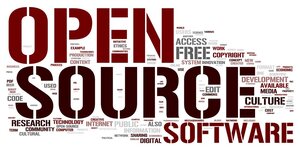Maximizing Profits with Open Source Monetization: Effective Strategies
الجسم
The open source movement has revolutionized software development, fostering a culture of collaboration, transparency, and innovation. Yet, as more businesses and developers embrace open source, the challenge of monetizing these projects effectively has become increasingly relevant. Open source software (OSS) provides unparalleled benefits in terms of flexibility and community-driven improvement, but translating these advantages into financial gains requires strategic planning. This article explores effective strategies for maximizing profits with open source monetization.
Understanding Open Source Monetization
Open source monetization involves generating revenue from software that is freely available for use, modification, and distribution. The key is to leverage the open source nature of the software while implementing strategies that provide value to users and incentivize them to pay. There are several approaches to consider:
1. Freemium Model
Concept: Offer a basic version of the software for free, with premium features available through a paid tier.
Benefits: Attracts a large user base quickly, as the free version lowers the barrier to entry. The premium features provide added value that users are willing to pay for.
Examples: Many SaaS (Software as a Service) companies use this model, such as GitHub with its free and paid tiers.
2. Open Core Model
Concept: Provide the core software for free and charge for advanced features, plugins, or support.
Benefits: Allows users to get started without any financial commitment, while generating revenue from advanced functionalities that enhance the core product.
Examples: Elastic (ElasticSearch) and Red Hat (Red Hat Enterprise Linux) successfully use this model.
3. Dual Licensing
Concept: Offer the software under an open source license and a commercial license. Users who prefer to avoid the open source license terms can purchase a commercial license.
Benefits: Provides flexibility for different types of users, allowing you to monetize from both the open source community and commercial entities.
Examples: MySQL and MongoDB have utilized dual licensing to cater to different user needs.
4. Support and Services
Concept: Offer paid support, consulting, or customization services for the open source software.
Benefits: Generates revenue through services rather than the software itself, leveraging expertise and offering value-added services.
Examples: Companies like Canonical (Ubuntu) and JFrog (Artifactory) provide support and consulting services for their open source products.
5. Donations and Crowdfunding
Concept: Seek financial contributions from users and supporters through donations or crowdfunding campaigns.
Benefits: Provides a way to fund development directly from the community, fostering a sense of ownership and involvement.
Examples: Projects like the Mozilla Foundation and the Debian Project have successfully used donations and crowdfunding to support their initiatives.
6. Training and Certification
Concept: Offer paid training courses and certifications related to the open source software.
Benefits: Generates revenue through education and certification, providing users with skills and credentials that enhance their professional capabilities.
Examples: The Linux Foundation and Kubernetes provide training and certification programs for their open source technologies.
Implementing Effective Strategies
To maximize profits with open source monetization, consider the following strategies:
1. Build a Strong Community
Engage with users and contributors through forums, social media, and events. A vibrant community can drive adoption, provide valuable feedback, and create advocates for the software.
2. Offer Exceptional Value
Ensure that the free version of the software provides significant value, while premium features or services offer clear and compelling benefits. The perceived value of the paid offerings should justify the cost.
3. Leverage Data and Analytics
Use data to understand user behavior, preferences, and pain points. This information can inform pricing strategies, feature development, and marketing efforts.
4. Create a Compelling Value Proposition
Clearly articulate the benefits of the paid offerings and how they address specific needs or challenges. A well-defined value proposition can persuade users to upgrade or purchase additional services.
5. Explore Partnerships
Collaborate with other businesses or organizations that complement your open source software. Partnerships can expand your reach, create new revenue opportunities, and enhance the overall value proposition.
6. Continuously Improve
Regularly update and improve the software based on user feedback and market trends. Continuous improvement helps maintain user satisfaction and attract new customers.
Conclusion
Maximizing profits with open source monetization requires a strategic approach that leverages the unique characteristics of open source software. By implementing models such as freemium, open core, dual licensing, support and services, donations, and training, businesses can create sustainable revenue streams while contributing to the broader open source community. Building a strong community, offering exceptional value, leveraging data, and exploring partnerships are crucial elements for success. With the right strategies in place, open source projects can thrive both in terms of innovation and profitability.












تعليقات